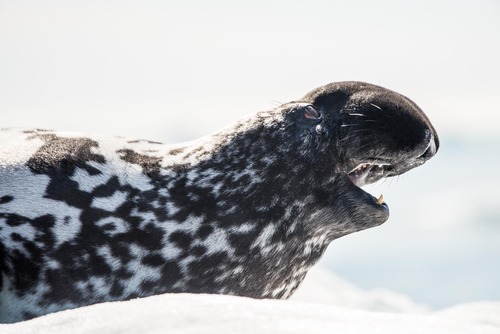
Hooded Seal
The hooded seal, Cystophora cristata, is famed for its males' inflatable nasal sac used for display and communication. Found in the icy North Atlantic, this solitary diver thrives in frigid waters, playing a vital role in its ecosystem with its unique adaptations and solitary nature.
35 years
Lifespan
159.665 - 299.884 kg
Weight
Length: 2.13 - 2.44 m
Size
Grey, Blue, Silver
Color
2-9 years
Age of Sexual Maturity
5-12 days
Age of Weaning
Vulnerable
Conservation Status
Unknown
Population Trend
Characteristics
Cystophora cristata, commonly known as the hooded seal, is notable for its unique inflatable nasal sac found in males. These seals inhabit the frigid waters of the North Atlantic and Arctic Oceans. They are solitary creatures, known for their impressive diving abilities and remarkable adaptations to cold environments.
Distribution Range of the Hooded Seal
North Atlantic Ocean and Arctic regions
Hooded Seal's Habitat
Environmental Conditions
Cystophora cristata, commonly known as the hooded seal, is native to the cold waters of the North Atlantic Ocean and adjacent Arctic regions. This species typically inhabits areas with pack ice, especially during breeding and molting seasons. The environmental conditions are characterized by frigid temperatures, presence of sea ice, and harsh weather conditions.
Ecological Niche
The ecological niche of the hooded seal includes its role as a predator of fish and invertebrates in the marine food web. It primarily feeds on a variety of fish species and squid, utilizing its agile swimming capabilities. The hooded seal is specially adapted to life in icy waters, with a thick blubber layer and the ability to dive to significant depths to forage for food. It is also known for its unique breeding behavior on ice floes, where males display their distinctive nasal sacs during mating rituals.
Copyright @ Nature Style Limited. All Rights Reserved.
 English
English